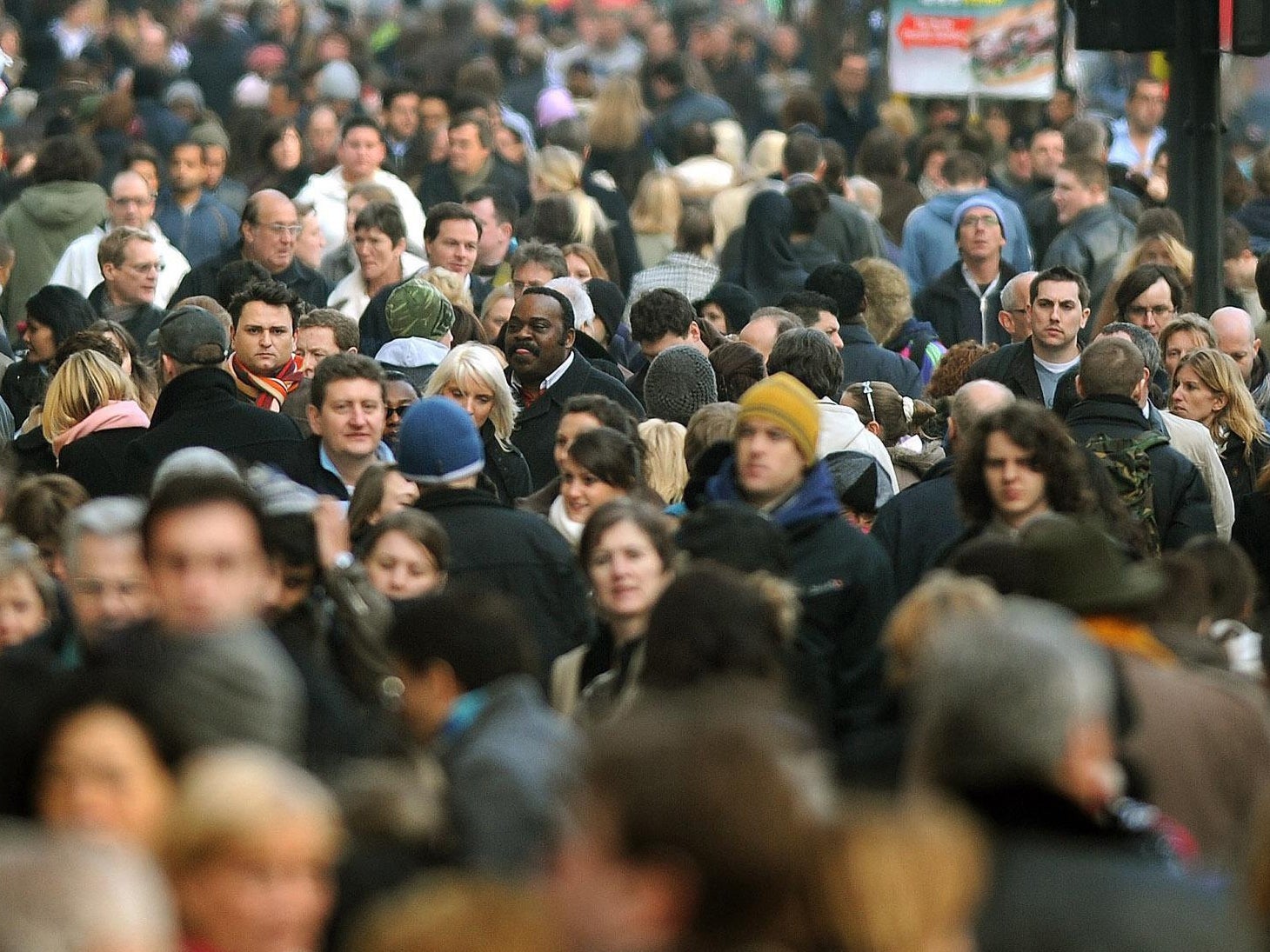23 areas have grown by more than a quarter since 2001, says ONS as UK population reaches 66.8 million
Biggest rises came in London, figures show

Your support helps us to tell the story
From reproductive rights to climate change to Big Tech, The Independent is on the ground when the story is developing. Whether it's investigating the financials of Elon Musk's pro-Trump PAC or producing our latest documentary, 'The A Word', which shines a light on the American women fighting for reproductive rights, we know how important it is to parse out the facts from the messaging.
At such a critical moment in US history, we need reporters on the ground. Your donation allows us to keep sending journalists to speak to both sides of the story.
The Independent is trusted by Americans across the entire political spectrum. And unlike many other quality news outlets, we choose not to lock Americans out of our reporting and analysis with paywalls. We believe quality journalism should be available to everyone, paid for by those who can afford it.
Your support makes all the difference.Twenty-three areas of the UK have seen their populations grow by more than one-quarter in the last two decades, according to new official figures.
Top of the list by some distance was the borough of Tower Hamlets in east London, with much of the top 10 also occupied by other parts of the capital.
The figures formed part of an Office for National Statistics (ONS) dataset revealed on Wednesday, which showed the UK’s total population had now hit 66.8 million.
Other council areas that saw population growth higher than 25 per cent were Uttlesford and Dartford in southeast England, Manchester, Leicester and South Derbyshire. In Manchester, for example, that meant an estimated change from 422,915 residents to 552,858.
The largest increases were all in England. In Northern Ireland, Mid-Ulster experienced the greatest population rise, at 24.7 per cent, and in Scotland it was East Lothian, up 18.8 per cent. Cardiff was Wales’ fastest-growing area, notching an 18.3-per-cent rise.
Council areas with biggest estimated population growth
ONS figures represent change from mid-2001 to mid-2019
1. Tower Hamlets: 61.5 per cent
2. Newham: 41.6 per cent
3. Hackney: 35.6 per cent
4. Corby: 35.2 per cent
5. Islington: 35.2 per cent
6. Camden: 33.3 per cent
7. Greenwich: 32.4 per cent
8. Uttlesford: 32.4 per cent
9. City of London: 32.1 per cent
10. South Derbyshire: 31.2 per cent
11. Dartford: 31.0 per cent
12. Manchester: 30.7 per cent
13. Barking & Dagenham: 28.5 per cent
14. Westminster: 28.5 per cent
15. Peterborough: 28.5 per cent
16. South Norfolk: 27.1 per cent
17. Milton Keynes: 26.7 per cent
18. Ashford: 26.2 per cent
19. Redbridge: 26.2 per cent
20. Welwyn Hatfield: 26.1 per cent
21. Boston: 25.8 per cent
22. Hounslow: 25.7 per cent
23. Leicester: 25.3 per cent
Eighteen parts of the UK saw marked drops in population, with the largest coming in Inverclyde, Scotland, where the population is estimated to have fallen by 7.5 per cent. Barrow-in-Furness experienced a population reduction of 6.8 per cent. the greatest percentage decrease in England.
The area with the biggest estimated numerical fall in population was Sunderland, which has shed nearly 7,000 people since 2001 — a decline in size of 2.4 per cent.
The ONS figures also revealed that the UK’s population growth rate in the year to mid-2019 was the slowest since 2004, at just 0.5 per cent, which statisticians attributed to falling birth numbers and net international migration. The ONS said immigration had fallen by 3 per cent and emigration had risen by 8 per cent on the previous 12 months.
Meanwhile, there were 593,000 deaths in the year to mid-2019, 5 per cent fewer than in the preceding period.
Neil Park, from the ONS population estimates unit, said: “The population grew at the slowest rate for 15 years between mid-2018 and mid-2019.
“This is due to the lowest number of births for 14 years alongside an increase in emigration and a fall in international immigration.
“The figures we’re publishing today highlight the variation in the population across the UK. For example, the population density in London is 24 times higher than that for the southwest of England.
“Also, the proportion of people aged 65 or over ranges from over 30 per cent in coastal areas such as North Norfolk to less than 8 per cent in parts of central London like Tower Hamlets.”
According to the ONS, in mid-2019 there were an estimated 12.4 million people aged 65 and over — making up 18.5 per cent of the population — while 2.5 per cent of people were 85 or older.
The country’s age groups are changing at sharply different rates, figures also suggest. While the number of children under six increased by 8 per cent between mid-2009 and mid-2019, the number of people aged 65 and over went up by 23 per cent, while those aged 70 and over jumped by 25 per cent.
The working age population, those aged between 16 and 64, showed the lowest growth of any age group over this period, rising by just 3 per cent.
The median average age for the population of the UK in mid-2019 was 40.3 years — one year higher than it was in mid-2009.
Robin Maynard, director of the charity Population Matters, welcomed the new figures and particularly the falling birth rate, which he said “means a better future for those children being born”.
He added: “We should never see population as just a number. More people, consuming more stuff, lessens our quality of life, produces more emissions, uses more of the Earth’s resources, and puts more pressure on our threatened natural environment.”
Additional reporting by Press Association
Join our commenting forum
Join thought-provoking conversations, follow other Independent readers and see their replies
Comments